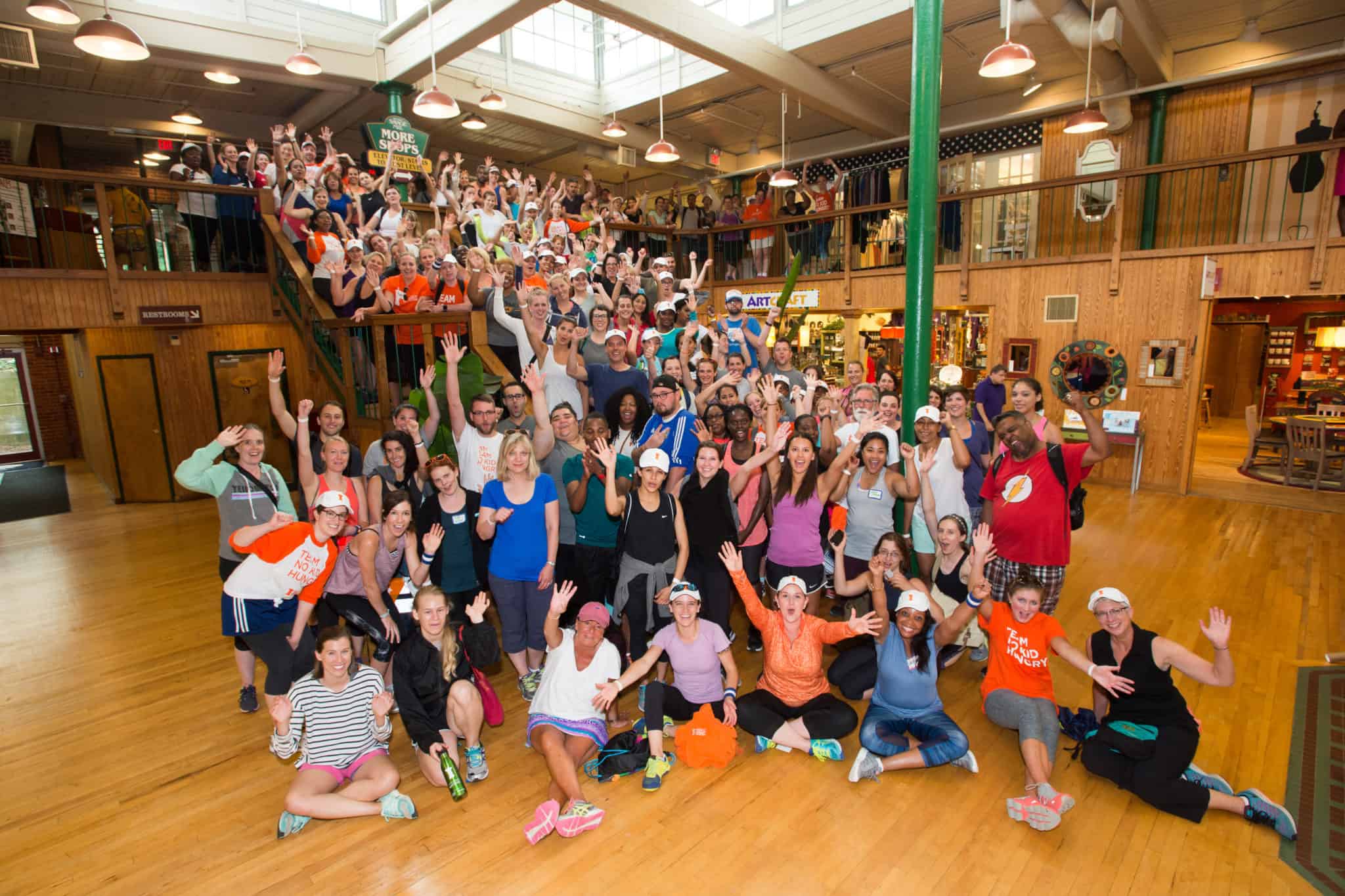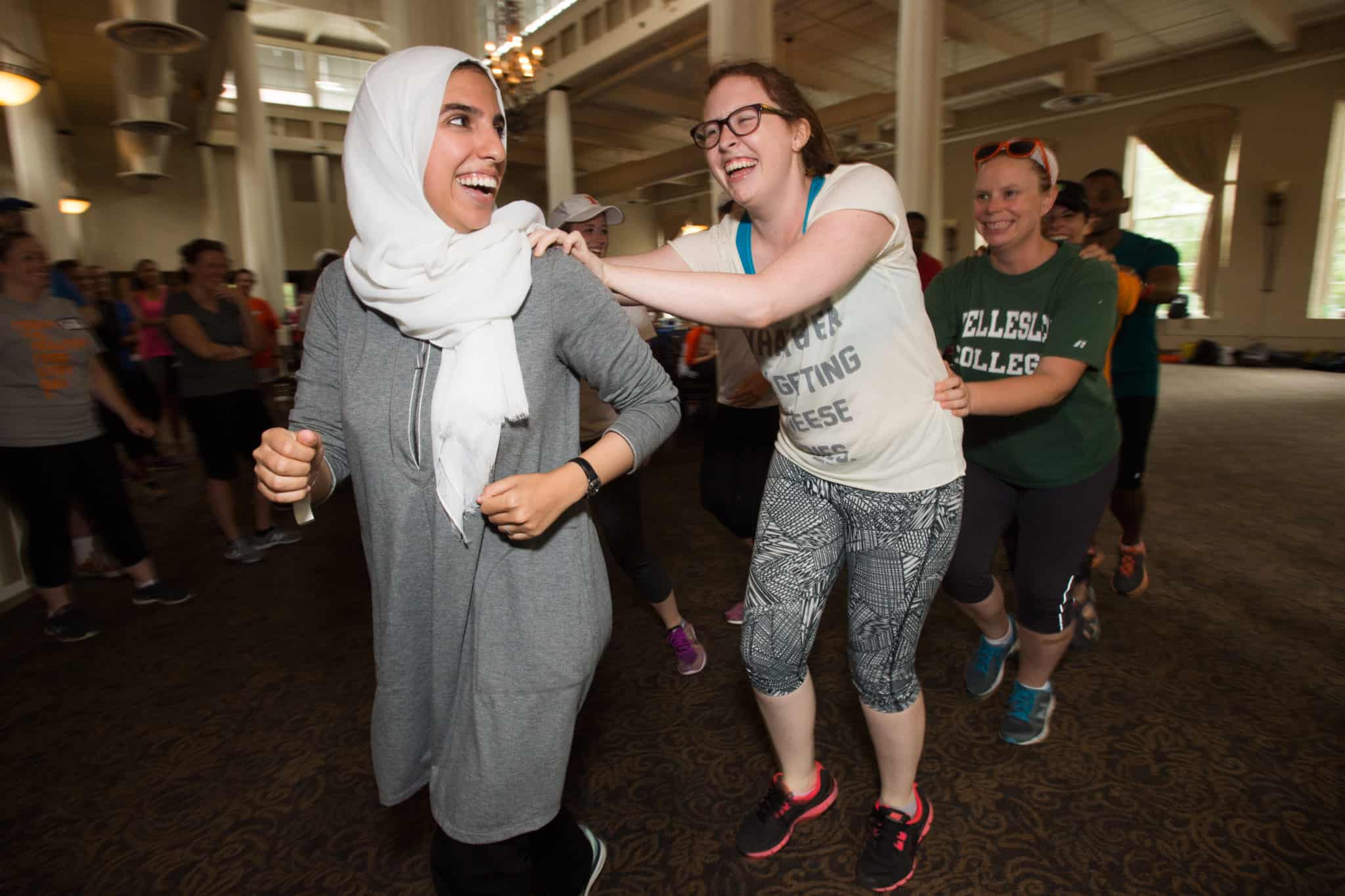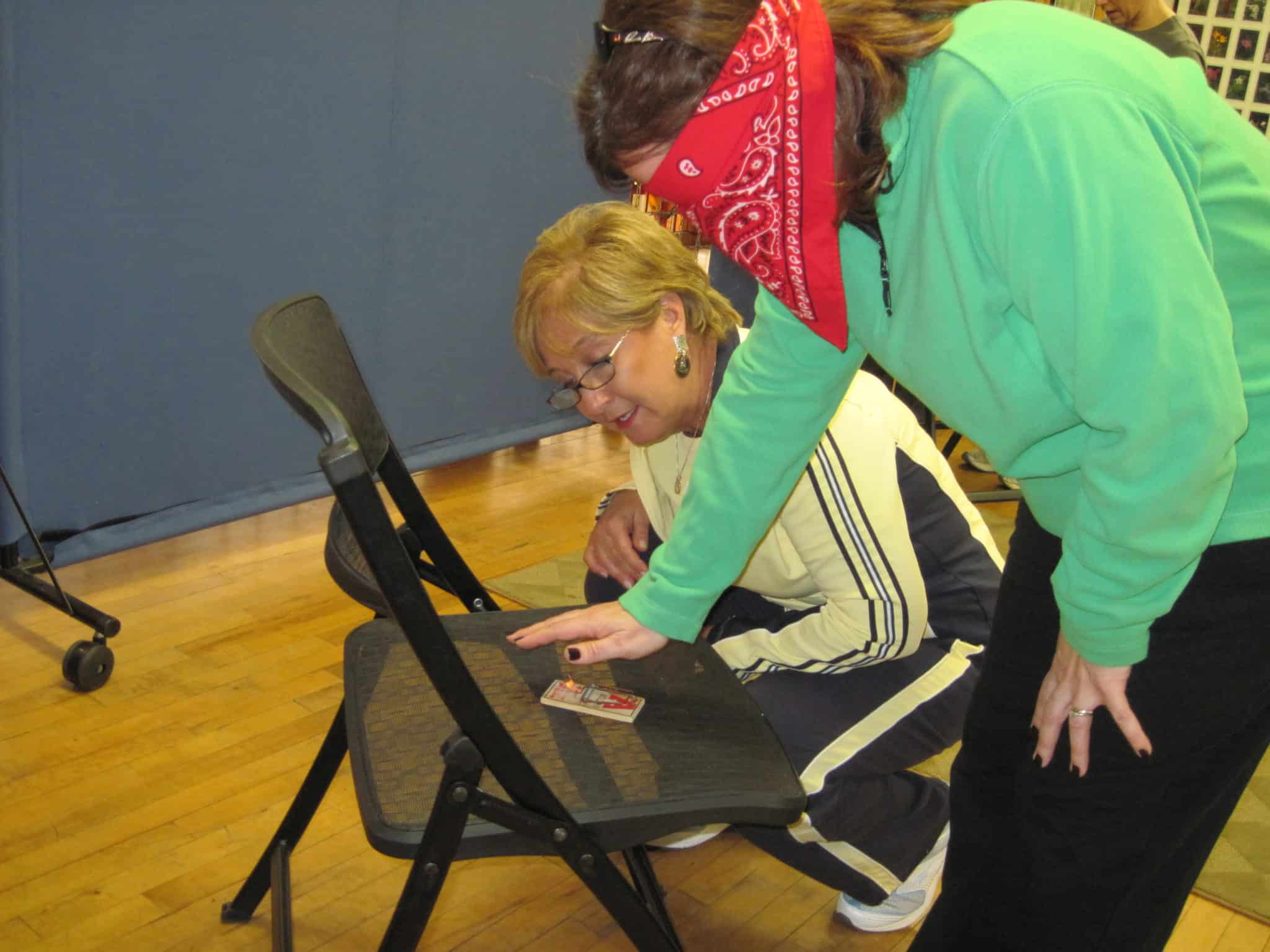Examples of Terrapin Adventures’ Team Building Goals and Exercises

At Terrapin Adventures, our games and exercises develop and improve relationships. We strive to create “Aha!” moments for participants as they learn, laugh, and share. Groups often learn more when they fail, during a team building exercise, as we debrief after each exercise, asking participants:
- How did it go? What worked well and what did not work out so well?
- What would you do differently?
- How does this apply to your work and personal life?
Objective: Break the Ice
TA Exercise: Knee Tag | Participants play an elimination tag game to get people moving and having fun.
TA Exercise: Captain on Deck | Participants need to form coalitions in this elimination game that is energetic and fun
TA Exercise: Hula Hoop Pass | Participant in a circle holding hands must pass a hula-hoop between people without letting go. This loosens people up and breaks some personal space boundaries.
Objective: Getting to Know Each Other Better
TA Exercise: Dance Machine. | Participants must introduce themselves, and share something about themselves that is not known. Then they must share their dance move, which the other participants must replicate.
TA Exercise: Web Rollup | Each member must talk about themselves until piece of webbing rolled up.
Objective: Building Confidence in Self and Your Team
TA Exercise: Conquer Your Fear of Heights| Taking on one, two or all three levels of the high ropes challenge course to conquer ones fear and anxiety. For a group confidence, small teams belay one member up the climbing tower. For added challenge, we sometimes blindfold one of the participants so they have to communicate clearly and trust their fellow participants.

Objective: To Communicate Clearly and Understand the Nuances of Verbal and Non-Verbal Communication
TA Exercise: Toss A Name/Group Juggle| Standing in a circle, participants must toss soft objects around the circle in a specific order. Participants learn how to provide verbal and non-verbal communication.
Objective: Learning How to Focus and Be Productive in a Chaotic & Stressful Environment
TA Exercise: Whichit-Whosit| Participants must pass objects around a circle keeping the message clear.
Objective: Learn How To Lead, Listen and Follow
TA Exercise: Labrynth| Participants must cooperate to direct ball through a human scale maze.
TA Exercise: Rear View Mirror | Involves three different participants.
- Seeker (Staff Member) – A person that cannot see, but is tasked with searching for an object to build something with.
- Talker (Middle Manager)- Has back to seeker but is taking information from the Director, while relaying that information to the Seeker.
- Directors (Sr. Executives) – Cannot talk, but can see the Seeker and must formulate and convey their plan to the Talker.
The Directors communicate to the Talkers, utilizing non-verbal communication. The Talker is taking that information and telling the Seeker where to go & what to do. The Seeker is listening to the Talker and trying execute the instructions. The goal is to clearly communicate the goals and objectives.
This game demonstrates the importance of clear communication up and down the chain of command. This exercise also emphasizes how important clear communication is and how the workers are dependent on each other to execute an order, to produce quality output.

Objective: Be Open to Other Points of View
TA Exercise: Bull Ring| The group must lift an object in the center of a ring attached with string and move it to another location. However, because of their physical location, everyone has a different point of view. Team members need to accept that things look different depending on your vantage point, and effectively share their POV, as it relates to the task-at-hand. This develops cooperation and emphasizes equality in the work process.
Objective: Stimulate Creative Problem Solving
TA Exercise: Humpty Dumpty | Teams are given equal amounts of raw materials and a time limit in which they must construct a structure to protect and egg as it is dropped from a specified height. This develops creative problem solving, teamwork and the execution of a plan.

TA Exercise: Magic Carpet | The group must all stand on a tarp and then flip the tarp over without getting off it. This exercise breaks down personal, “bubble” space and the silos that people operate in.

TA Exercise: Human Brain | Participants form a circle and grab the hand of the person opposite them and then the group must unwind themselves without letting go. This develops teamwork and cooperation.
Objective: Collaborate Effectively
TA Exercise: Australian Trolley | Participants must work in unison to travel a distance along the ground while attached to a couple of 2-by-4’s (wooden planks) with strings
TA Exercise: Pipeline | Groups must work together in order to transport a marble through a pipeline they construct — and break down and rebuild, continuously throughout the exercise — while they negotiate obstacles in the process.

TA Exercise: Master Weaving Project | Imagine a large spider web. In order to successfully pass through the hazard, your group must thread a piece of knotted webbing through each opening, in a particular order, without touching the side of the web. To add complexity, we often blindfold half the participants so that the team must figure out how to communicate clearly and work with constraints.
TA Exercise: Reach Your Goals| Participants must be creative and use their team members to, quite literally, reach their goals! No repeats: A new and unique method must be used for everyone to reach their goal.
Objective: Develop or Improve Trust
TA Exercise: Mousetrap | Participants are split into small groups. They must verbally instruct teammate — who are blindfolded — how to place their hand on a live mousetrap. This exercise instills the importance of specificity in communication and feedback loops to build trusting relationships.

TA Exercise: Wind in the Willows | Participants learn how many hands make light while they first learn how to properly spot for each other. One-at-a-time, participants must trust the group to catch them as they fall backwards and are lifted up in the air, above the spotters heads.
TA Exercise: Wild Woozy | After learning how to spot safely, two people stand on a wire, one foot off the ground, at the apex of a triangle. They must each other for support as they go from the apex of the structure to the base of the triangle, all while their teammates spot them for support. We like to call this exercise total commitment, as participants must fully commit to each other, and lean in, to be successful.
Objective: Ability to Deal with Change, Constructive Conflict, Deadlines, Constraints
TA Exercise: Nitro Crossing | Team must cross an imaginary obstacle on a “Tarzan Swing” — two feet off the ground — transporting all team members across safely to stand on raised platforms, on the other side of the obstacle.
During this exercise, we will assess the ability of the group and adjust the difficulty of their task, based on the progress they’ve made tackling other challenges, throughout the day. For example, we may remove the number of landing spots or have people lose the ability to stand on a leg if they touch the hazard. We may blindfold someone or impose a time constraint.Your team will be challenged both physically and mentally!
Objective: Improve Ability To Develop and Execute a Plan
TA Exercise: Whale Watch| All the members of the team must get on an unstable platform, one foot off of the ground, and stay balanced. They must then exit off the platform without allowing the platform to touch the ground. The key with this and many exercises is to think, plan, and consider alternative ways to solve a problem before jumping in.
Objective: Considering How Your Actions Affect The Group
TA Exercise: Lily Pad/Gator Board | The team must figure out how get all members to cross a distance using discs or boards without losing contact with boards.

Objective: Collaborating Effectively on Complex Tasks
TA Exercise: Build-A-Program| We provide each team with raw materials — such as cardboard, duct tape, PVC piping, or more. Each team must then construct something! One example: A boat made of cardboard and duct tape. One lucky team member must navigate across the Little Patuxent River in the boat. Another project is to build a bicycle which is then donated to a local charity.
